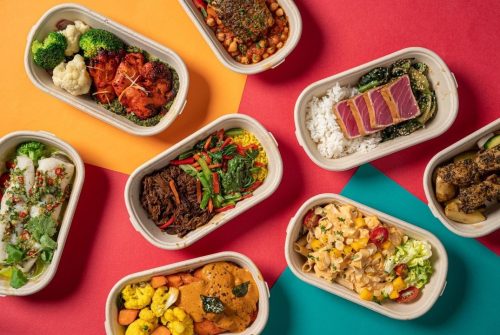
A successful commercial kitchen or commissary kitchen is the heart and soul of any food-related establishment, whether it’s a restaurant, hotel, or catering service. It isthe place where culinary creations come to life, and where efficiency and organization are paramount. In this article, we will explore the key elements that contribute to a successful commercial kitchen and ensure smooth operations.
Some more elemenets
Well-Planned Layout: A well-designed layout is the foundation of a successful commercial kitchen. The arrangement of workstations, equipment, and storage areas should be carefully planned to optimize workflow and minimize unnecessary movement. The “kitchen triangle” concept, which positions the cooking, preparation, and storage areas in a triangular layout, ensures efficiency and convenience. This layout allows chefs and kitchen staff to move seamlessly between stations, reducing the time and effort required to prepare and serve meals.
High-Quality Equipment: Commercial kitchens rely on high-quality, durable equipment to meet the demands of a fast-paced environment. From commercial-grade ovens and grills to refrigeration units and food processors, investing in reliable and efficient equipment is essential. High-performance equipment not only enhances productivity but also ensures consistency in cooking results. Regular maintenance and prompt repairs are crucial to keep the equipment in optimal condition, minimizing downtime and ensuring smooth operations.
Skilled and Trained Staff: A successful commercial kitchen is only as good as its staff. Hiring skilled and knowledgeable chefs, line cooks, and kitchen staff is crucial for the smooth functioning of the kitchen. Training programs should be implemented to ensure that all staff members understand proper food handling techniques, safety protocols, and efficient workflow. Ongoing training and professional development opportunities help staff stay updated with industry trends and enhance their culinary skills.

Effective Communication: Effective communication is essential in a busy commercial kitchen. Clear and concise communication between kitchen staff, servers, and management helps prevent mistakes, delays, and misunderstandings. Implementing a system for order communication, such as using order tickets or digital screens, ensures that all staff members are aware of incoming orders and their respective responsibilities. Regular team meetings and open lines of communication create a collaborative and efficient work environment.
Strict Hygiene and Safety Practices: Hygiene and safety should be top priorities in any commercial kitchen. Strict adherence to food safety regulations, proper handwashing, regular cleaning schedules, and maintaining proper storage and temperature controls for ingredients are crucial for preventing foodborne illnesses and ensuring the health of customers. Regular inspections and audits help identify areas for improvement and maintain the highest standards of cleanliness and safety.
Efficient Inventory Management: Effective inventory management is essential for controlling costs, minimizing waste, and ensuring that ingredients are readily available when needed. Implementing a system for inventory tracking, such as using software or barcode scanning, helps monitor stock levels, track expiration dates, and streamline ordering processes. This allows commercial kitchens to minimize food waste, optimize ingredient usage, and avoid shortages or overstocking.
Menu Innovation and Flexibility: A successful commercial kitchen should embrace menu innovation and adaptability to cater to changing consumer preferences and market trends. Regularly reviewing and updating menus allows for the incorporation of new dishes, seasonal ingredients, and unique culinary creations. Offering flexibility and customization options for customers with dietary restrictions or preferences further enhances the dining experience and expands the customer base.
Continuous Improvement: Successful commercial kitchens strive for continuous improvement. Regularly evaluating operations, seeking feedback from customers and staff, and implementing changes based on insights gained contribute to ongoing success. Embracing new technologies, attending industry conferences, and staying informed about the latest culinary trends and techniques ensure that commercial kitchens remain competitive and relevant.
In conclusion, a successful commercial kitchen requires careful planning, efficient operations, skilled staff, and a commitment to excellence. By focusing on the key elements discussed in this article, commercial kitchens can create a productive, safe, and innovative environment that delivers exceptional culinary experiences to customers.





